11 巻
選択された号の論文の31件中1~31を表示しています
- |<
- <
- 1
- >
- >|
-
原稿種別: 表紙
2008 年11 巻 p. Cover1-
発行日: 2008/09/20
公開日: 2017/08/07
PDF形式でダウンロード (20K) -
原稿種別: Bibliography
2008 年11 巻 p. Misc1-
発行日: 2008/09/20
公開日: 2017/08/07
PDF形式でダウンロード (18K) -
原稿種別: 目次
2008 年11 巻 p. Toc1-
発行日: 2008/09/20
公開日: 2017/08/07
PDF形式でダウンロード (58K) -
原稿種別: 付録等
2008 年11 巻 p. App1-
発行日: 2008/09/20
公開日: 2017/08/07
PDF形式でダウンロード (84K) -
原稿種別: Article
2008 年11 巻 p. 1-20
発行日: 2008/09/20
公開日: 2017/08/07
PDF形式でダウンロード (1358K) -
原稿種別: Article
2008 年11 巻 p. 21-40
発行日: 2008/09/20
公開日: 2017/08/07
PDF形式でダウンロード (1213K) -
原稿種別: Article
2008 年11 巻 p. 41-60
発行日: 2008/09/20
公開日: 2017/08/07
PDF形式でダウンロード (1529K) -
原稿種別: 本文
2008 年11 巻 p. 61-76
発行日: 2008/09/20
公開日: 2017/08/07
PDF形式でダウンロード (1203K) -
原稿種別: 本文
2008 年11 巻 p. 77-95
発行日: 2008/09/20
公開日: 2017/08/07
PDF形式でダウンロード (1642K) -
原稿種別: Article
2008 年11 巻 p. 96-108
発行日: 2008/09/20
公開日: 2017/08/07
PDF形式でダウンロード (892K) -
原稿種別: Article
2008 年11 巻 p. 109-123
発行日: 2008/09/20
公開日: 2017/08/07
PDF形式でダウンロード (1241K) -
原稿種別: Article
2008 年11 巻 p. 124-138
発行日: 2008/09/20
公開日: 2017/08/07
PDF形式でダウンロード (1010K) -
原稿種別: 本文
2008 年11 巻 p. 139-155
発行日: 2008/09/20
公開日: 2017/08/07
PDF形式でダウンロード (1238K) -
原稿種別: 本文
2008 年11 巻 p. 156-172
発行日: 2008/09/20
公開日: 2017/08/07
PDF形式でダウンロード (1797K) -
原稿種別: 本文
2008 年11 巻 p. 173-188
発行日: 2008/09/20
公開日: 2017/08/07
PDF形式でダウンロード (1424K) -
原稿種別: Article
2008 年11 巻 p. 189-208
発行日: 2008/09/20
公開日: 2017/08/07
PDF形式でダウンロード (1666K) -
原稿種別: 付録等
2008 年11 巻 p. App2-
発行日: 2008/09/20
公開日: 2017/08/07
PDF形式でダウンロード (86K) -
原稿種別: 付録等
2008 年11 巻 p. 209-
発行日: 2008/09/20
公開日: 2017/08/07
PDF形式でダウンロード (75K) -
原稿種別: Appendix
2008 年11 巻 p. 210-
発行日: 2008/09/20
公開日: 2017/08/07
PDF形式でダウンロード (83K) -
原稿種別: 付録等
2008 年11 巻 p. 211-
発行日: 2008/09/20
公開日: 2017/08/07
PDF形式でダウンロード (70K) -
原稿種別: Appendix
2008 年11 巻 p. 212-213
発行日: 2008/09/20
公開日: 2017/08/07
PDF形式でダウンロード (107K) -
原稿種別: 付録等
2008 年11 巻 p. 214-
発行日: 2008/09/20
公開日: 2017/08/07
PDF形式でダウンロード (61K) -
原稿種別: 付録等
2008 年11 巻 p. 215-
発行日: 2008/09/20
公開日: 2017/08/07
PDF形式でダウンロード (42K) -
原稿種別: 付録等
2008 年11 巻 p. 215-
発行日: 2008/09/20
公開日: 2017/08/07
PDF形式でダウンロード (42K) -
原稿種別: 付録等
2008 年11 巻 p. 215-
発行日: 2008/09/20
公開日: 2017/08/07
PDF形式でダウンロード (42K) -
原稿種別: 付録等
2008 年11 巻 p. 216-
発行日: 2008/09/20
公開日: 2017/08/07
PDF形式でダウンロード (50K) -
原稿種別: 付録等
2008 年11 巻 p. 216-
発行日: 2008/09/20
公開日: 2017/08/07
PDF形式でダウンロード (50K) -
原稿種別: 付録等
2008 年11 巻 p. 217-
発行日: 2008/09/20
公開日: 2017/08/07
PDF形式でダウンロード (52K) -
原稿種別: Appendix
2008 年11 巻 p. 218-
発行日: 2008/09/20
公開日: 2017/08/07
PDF形式でダウンロード (56K) -
原稿種別: Appendix
2008 年11 巻 p. 219-255
発行日: 2008/09/20
公開日: 2017/08/07
PDF形式でダウンロード (1921K) -
原稿種別: 付録等
2008 年11 巻 p. App3-
発行日: 2008/09/20
公開日: 2017/08/07
PDF形式でダウンロード (19K)
- |<
- <
- 1
- >
- >|
